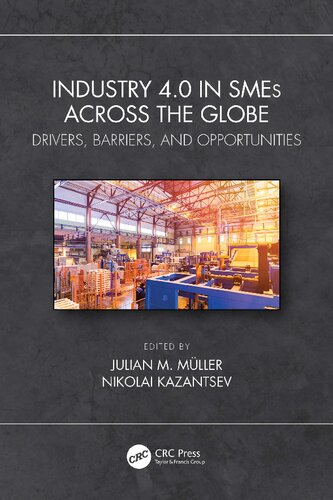

Most ebook files are in PDF format, so you can easily read them using various software such as Foxit Reader or directly on the Google Chrome browser.
Some ebook files are released by publishers in other formats such as .awz, .mobi, .epub, .fb2, etc. You may need to install specific software to read these formats on mobile/PC, such as Calibre.
Please read the tutorial at this link. https://ebooknice.com/page/post?id=faq
We offer FREE conversion to the popular formats you request; however, this may take some time. Therefore, right after payment, please email us, and we will try to provide the service as quickly as possible.
For some exceptional file formats or broken links (if any), please refrain from opening any disputes. Instead, email us first, and we will try to assist within a maximum of 6 hours.
EbookNice Team

Status:
Available4.5
28 reviewsThe field of Small and Medium-Sized Enterprises (SMEs) digitalization is becoming more mature and has a significant contribution to fully develop the agenda of Industry 4.0. Although national digitalization programs have their own goals, the common focus is on the role of SMEs in global value chains. Since SMEs are known to have challenges around Industry 4.0 implementation, this book integrates experience from 14 countries worldwide.
Industry 4.0 in SMEs Across the Globe: Drivers, Barriers, and Opportunities provides an in-depth overview of Industry 4.0 in SMEs, covering various national, historical, and geographical settings in nine European countries: Finland, France, Hungary, Italy, Poland, Russia, Lithuania, Serbia, and the UK, complemented by five further countries from around the world: Brazil, China, India, Iran, and the US. Each chapter describes the national digitalization program, along with barriers, drivers, and opportunities to implement Industry 4.0 in local SMEs. It subsumes the findings across these countries to identify common themes and clusters of drivers, barriers, and opportunities. The book concludes that there are common approaches of SMEs across the world to adopt Industry 4.0, which are to be understood to increase industrial competitiveness globally.
This book is a great resource for digitalization leaders and laggards, business consultants and researchers, as well as Ph.D. and Master's students from Industrial Engineering and Manufacturing backgrounds. Policymakers can also use the contents to better understand commonalities and differences of national digitalization programs and further support SMEs in their digitalization process.